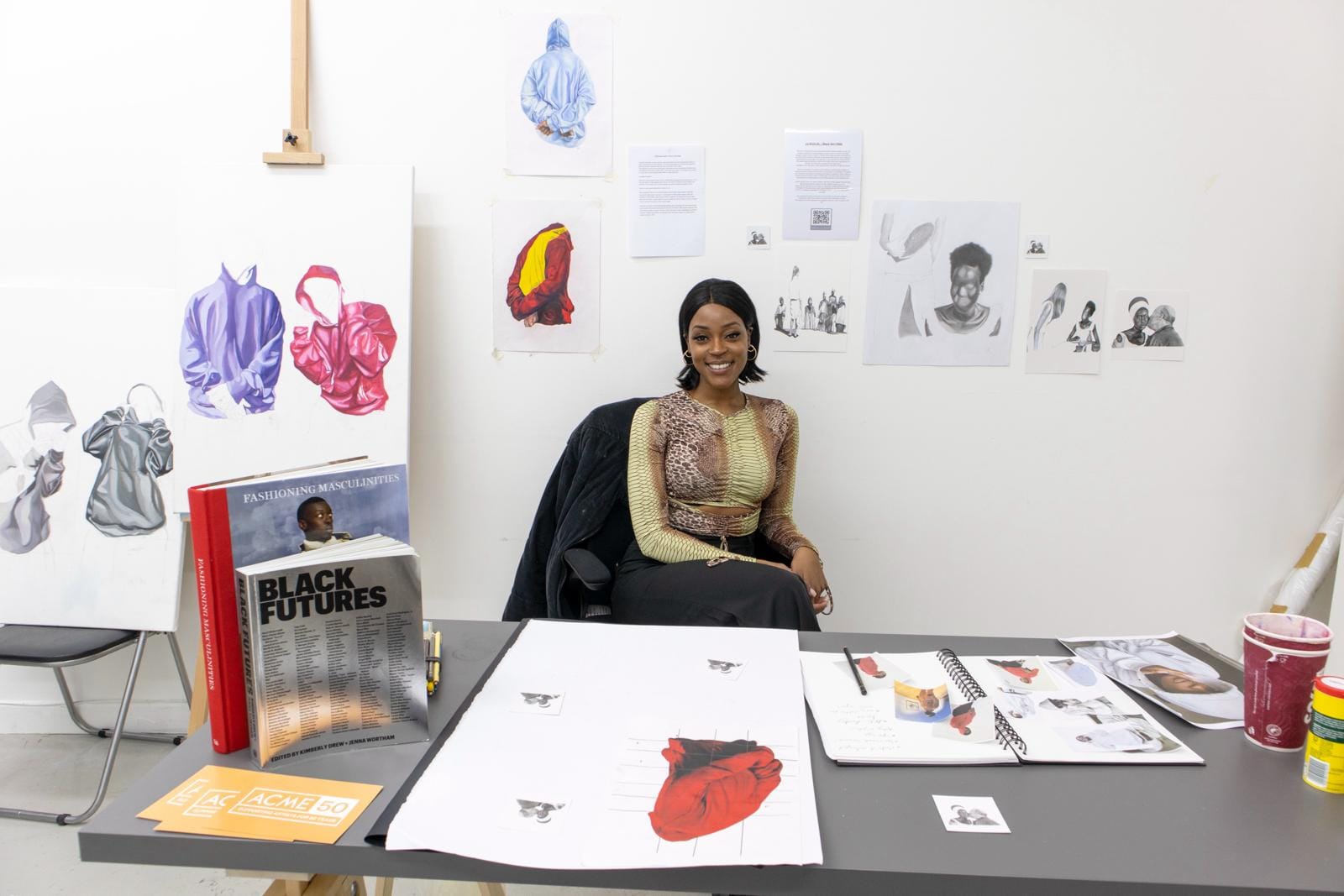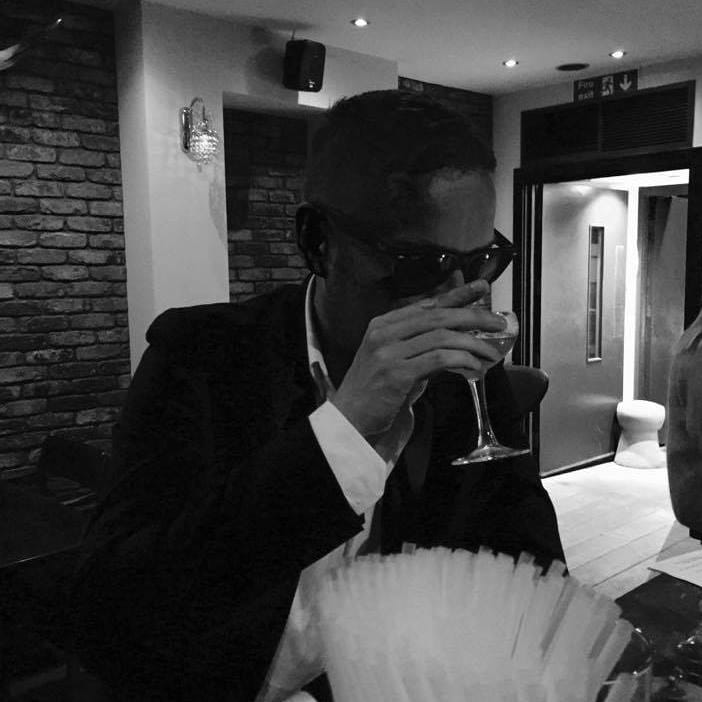We chat with Natasha Muluswela, a fantastic Zimbabwe-born visual artist, currently working and studying in the UK. We chew over technique, expression, politics, power and catharses in creating.
Hey Natasha! Let's get down to it - can you fill us in on your journey so far?
Art has always been a part of my life. Growing up in Zimbabwe in a creative family, I was constantly surrounded by artists. My uncle, a metal sculptor, had a gallery where I would often visit and marvel at the handmade creations. However, my personal art journey officially began in late 2018, when I held my first exhibition with BetterShared during Africa Week. Since then, I've had the privilege of showcasing my work in various London exhibitions, including Portrait of a Top Boy at Somerset House, which was later acquired by the National Portrait Gallery, and Young Masters, where I was honoured with the Emerging Woman Artist Award in 2023. I’ve recently embarked on a new chapter, pursuing my master’s in Painting at the Royal College of Art—a path that continues to be one of growth and artistic evolution.
How has your technique grown and developed?
I've always been drawn to realism, but it was photography that truly helped me refine my technique with pencil. I’ve long admired the work of Lee Jeffries, particularly the gritty rawness he captures in his images. Early on, I tried to replicate the intricate details of his photographs, incorporating them into my own drawings. By using the grid method, I was able to break down images and better understand how to capture fine details. However, I've since moved away from relying on the grid. Now, I transfer images directly from photographs or from my imagination onto paper or canvas. Over time, I’ve begun to develop a technique that’s uniquely my own, one that continues to evolve. I'm confident in my ability to capture depth and detail in my pencil work, but my master's program is helping me push beyond my comfort zone and build confidence in painting. So far, I've enjoyed diving into this new medium—let's see where it takes me!
Where does your inspiration and influences come from?
Where do I begin? Artists such as Samuel Ross, Barbara Walker, Ronan McKenzie and Claudette Johnson are major influences of mine in the UK. However I am also very inspired by my peers that are establishing their careers right now. It's beautiful to witness and be part of the journey and growth of where they are going. As I’ve mentioned, I’m passionate about film and reading essays—these give me more ideas and inspiration than any other source. It may not be unusual, but I also love attending talks and taking in podcasts that explore real-life experiences. One podcast I highly recommend is Heavyweight by Jonathan Goldstein. I often have it playing in the background while I’m in the studio, letting myself get lost in each story as I work.


Image copyright: Natasha Muluswela
The Big Question - how do access your creativity?
This is a really good thinking point. Living in the age of social media, we are very blessed to have an abundance of artists posting their work. I am so inspired by my peers and the amazing work they put out for the world to see. I am mainly drawn by my surroundings and lived experience as a Zimbabwean woman now living in the UK. I am a big fan of film, particularly the oeuvres of Ousmane Sembene, whilst studying my BA in Languages. I wrote my dissertation on a number of his works. I had the idea to turn this into a body of work so I sat on the idea for over 5 years until I had my a-ha moment. I also work as an interpreter so I also draw inspiration from stories and the lives of others that resonate with my own. I tap into these memories and conversations that fuel my creative output, channelling them and expressing it through art. Sometimes stepping away from my work is essential. It allows space and time for my ideas to flourish without pressure. Experiencing real life, rest and mental downtime is just as important as active creation.


Image copyright: Natasha Muluswela
Your work is incredibly powerful, and political - it's defiant and undeniable. Can you talk to us about that?
My work is deeply influenced by politics and the lasting scars of colonialism. It draws heavily on my lived experience of moving to the UK at a young age and confronting racism, marginalisation, and the sense of displacement that came with it. Through my art, I aim to shed light on the complex realities of my origins—exploring how these histories shaped not only my journey but also that of my family, bringing us to the UK. I also reflect on my heritage and envision the future of Africa within my work. By tackling these questions, I seek to break down and understand them for myself. My story is unique, but it resonates with many others who share similar experiences, and I believe this makes it an important and powerful narrative to share. As I grow more comfortable and confident in expressing the painful parts of my past, I find that it helps me confront aspects of my identity that I once suppressed in order to assimilate. This process of storytelling, though difficult, has become a vital part of my artistic journey and is one I aim to continue to do. This leads on to the next discussion point of how I channel my anger and release these emotions to reach catharsis.


Image copyright: ©Paul Tucker
And does this expression channel anger or does it reach a state of catharsis?
My work addresses painful topics that I have encountered in my life. Having lived in the UK for the majority of my life. It meant that I had to miss out on many things back home, such as not being able to see my grandmother before she passed away or seeing my family grow. I find that art has been a very therapeutic medium which has allowed me to tap into my emotions and confront the pain that I feel. I would not necessarily say that I have reached catharsis, that will come in its own time. But it has helped me to process and understand many things which cannot be explained and that is the beauty of having my creative outlet.

With that in mind, and with all the weight and emotion driving your work, how do you know when a piece is 'finished?'
I don’t think any artist ever truly knows when a piece is finished. It’s more about sensing when to stop, to avoid overworking the drawing or painting. Sometimes I’ll spend over 80 hours on a piece, only to realise it looks almost the same as it did after 50 hours. As a perfectionist, this is something I’m learning to let go of. Instead of trying to reach a point where I feel the work is "complete," I’m learning to let the artwork itself guide me, allowing it to tell me when it’s done. It’s a process of releasing control and trusting the flow.

'Trusting the flow' - amen to that! And so, our time with Natasha is at an end - a truly insightful and thought-provoking chat indeed. If you you would like to learn more about Natasha and her great work, hit the button below and go check out her insta!


